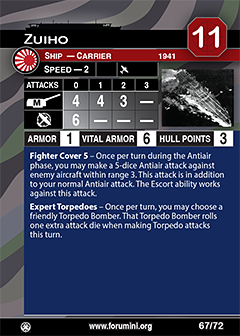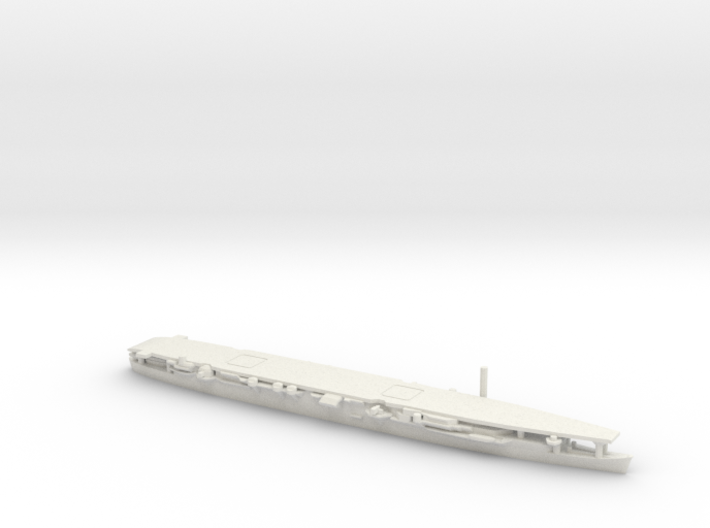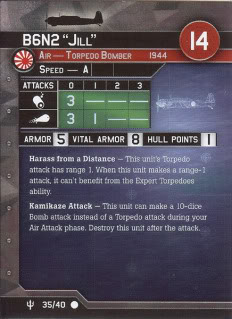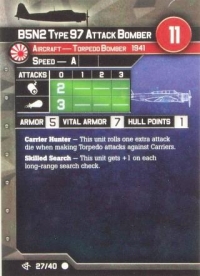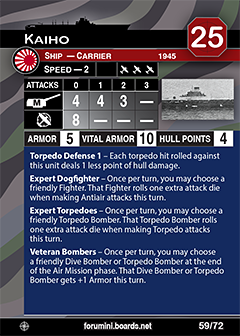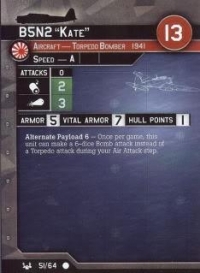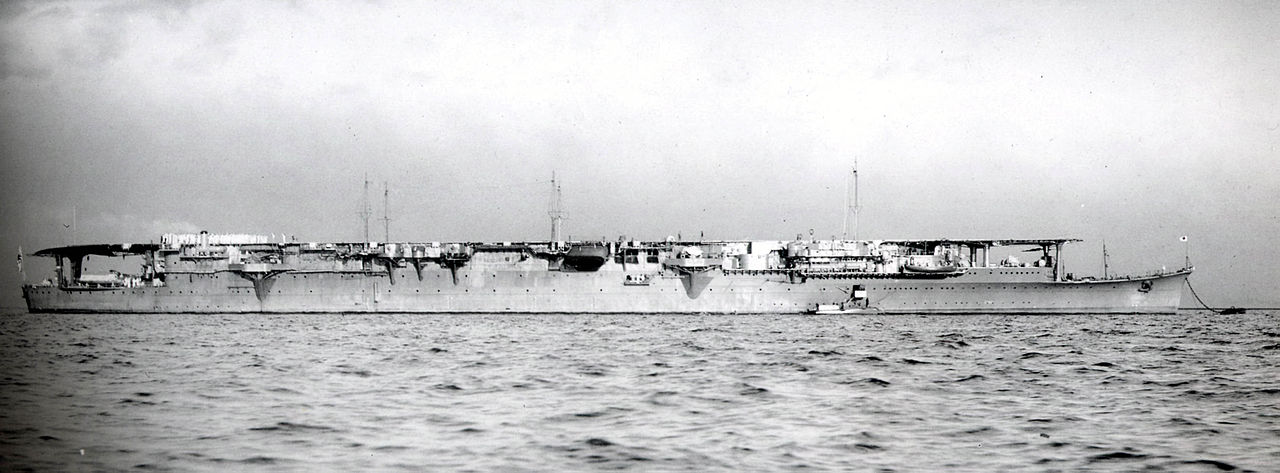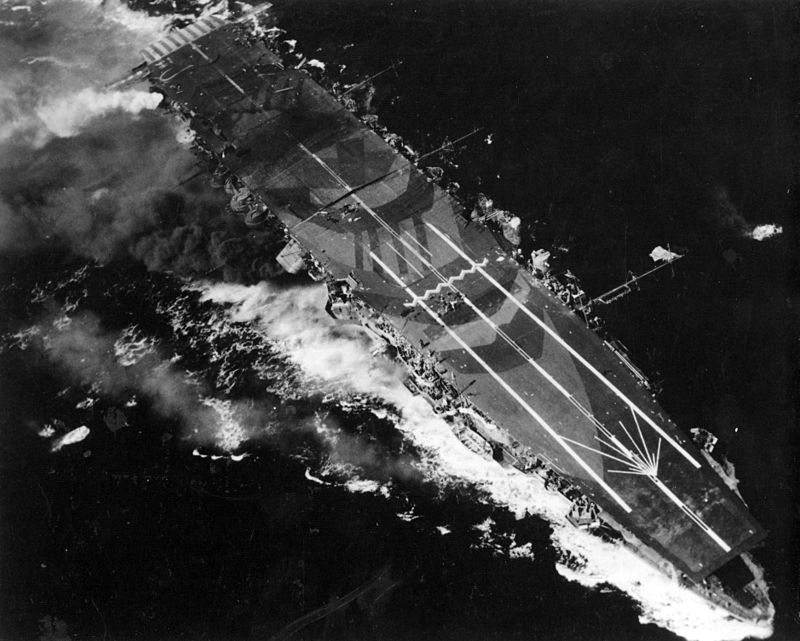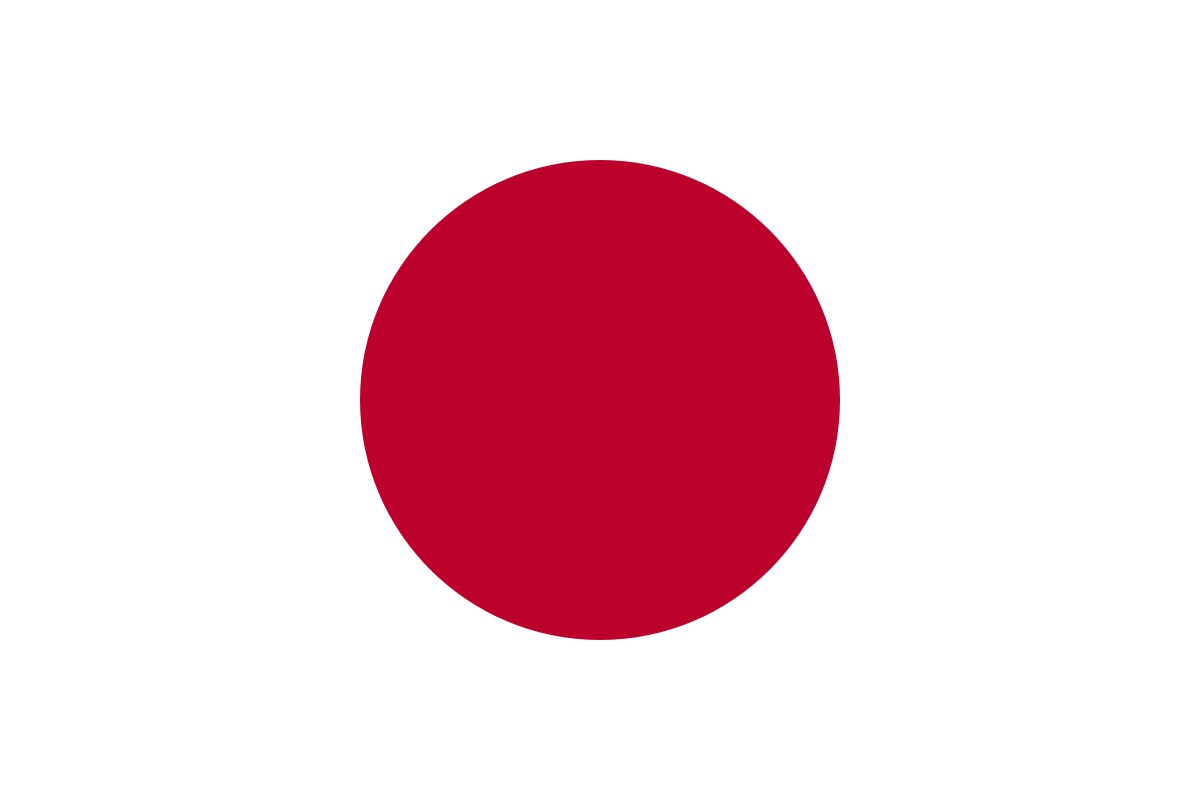Prototype: Zuihō (瑞鳳, "Auspicious Phoenix" or "Fortunate Phoenix") was a light aircraft carrier of the Imperial Japanese Navy. Originally laid down as the submarine support ship Takasaki, she was renamed and converted while under construction into an aircraft carrier. The ship was completed during the first year of World War II and participated in many operations. Zuihō played a secondary role in the Battle of Midway in mid-1942 and did not engage any American aircraft or ships during the battle. The ship participated in the Guadalcanal Campaign during the rest of 1942. She received significant damage during the Battle of the Santa Cruz Islands during this campaign and covered the evacuation of Japanese forces from the island in early 1943 after repairs.
Afterwards, her aircraft were disembarked several times in mid- to late-1943 and used from land bases in a number of battles in the South West Pacific. Zuihō participated in the Philippine Sea and Leyte Gulf battles in mid-1944. In this last battle, Zuihō mainly served as a decoy for the main striking forces and she was finally sunk by American aircraft fulfilling her task. In between engagements, the ship served as a ferry carrier and a training ship.
Afterwards, her aircraft were disembarked several times in mid- to late-1943 and used from land bases in a number of battles in the South West Pacific. Zuihō participated in the Philippine Sea and Leyte Gulf battles in mid-1944. In this last battle, Zuihō mainly served as a decoy for the main striking forces and she was finally sunk by American aircraft fulfilling her task. In between engagements, the ship served as a ferry carrier and a training ship.
Class History: The Zuihō class was a group of two aircraft carriers built for the Imperial Japanese Navy before World War II. Both ships were originally built as submarine tenders, but were subsequently converted into carriers. Completed in early 1942, Shōhō supported the invasion forces in Operation MO, the invasion of Port Moresby, New Guinea, and was sunk by American carrier aircraft on her first combat operation during the Battle of the Coral Sea on 7 May. Shōhō was the first Japanese aircraft carrier to be sunk during World War II. Zuihō played a secondary role in the Battle of Midway in mid-1942 and did not engage any American aircraft or ships during the battle. The ship participated in the Guadalcanal Campaign during the rest of 1942. She was lightly damaged during the Battle of the Santa Cruz Islands during this campaign and covered the evacuation of Japanese forces from the island in early 1943 after repairs.
Afterwards, her aircraft were disembarked several times in mid to late 1943 and used from land bases in a number of battles in the South West Pacific. Zuihō participated in the Philippine Sea and Leyte Gulf in mid-1944. In this last battle, Zuihō mainly served as a decoy for the main striking forces and she was finally sunk by American aircraft fulfilling her task. In between engagements, the ship served as a ferry carrier and a training ship.
Afterwards, her aircraft were disembarked several times in mid to late 1943 and used from land bases in a number of battles in the South West Pacific. Zuihō participated in the Philippine Sea and Leyte Gulf in mid-1944. In this last battle, Zuihō mainly served as a decoy for the main striking forces and she was finally sunk by American aircraft fulfilling her task. In between engagements, the ship served as a ferry carrier and a training ship.
Country: Japan is an island nation in the Pacific Ocean with dense cities, imperial palaces, mountainous national parks and thousands of shrines and temples. Shinkansen bullet trains connect the main islands of Kyushu (with Okinawa's subtropical beaches), Honshu (home to Tokyo and Hiroshima’s atomic-bomb memorial) and Hokkaido (famous for skiing). Tokyo, the capital, is known for skyscrapers, shopping and pop culture.
Although legend has it that Japan was founded in 660BC, archaeologists agree that settlement in the Japanese archpelago dates back as far as 100,000 years. The Jomon Period (8000-c.300BC) is the earliest that has been studied. It is named after the 'jomon' or cord-marked pattern style of pottery of the period.
Although legend has it that Japan was founded in 660BC, archaeologists agree that settlement in the Japanese archpelago dates back as far as 100,000 years. The Jomon Period (8000-c.300BC) is the earliest that has been studied. It is named after the 'jomon' or cord-marked pattern style of pottery of the period.
Item created by: gdm on 2015-10-03 06:39:42. Last edited by gdm on 2020-03-23 10:14:47
If you see errors or missing data in this entry, please feel free to log in and edit it. Anyone with a Gmail account can log in instantly.
If you see errors or missing data in this entry, please feel free to log in and edit it. Anyone with a Gmail account can log in instantly.


